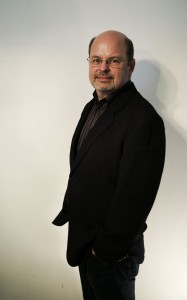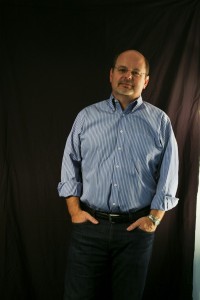By John Gilstrap
Last week, our friend and frequent-poster Terri Lynn Coop posted the following comment:
“You’ve talked about becoming agented and querying. However, what happens once your novel or non-fic is sold to the publisher.
What kind of deadlines are there? How firm are those deadlines? What role does your agent play after the publishing contract is signed? What sort of public face does your agent and publisher expect you to maintain from contract to release (is there a difference between fiction and non-fiction)? When do you see your advance?”
It’s a great bunch of questions. I’m going to take a shot at some answers. The underlying assumption of my answers is that this is a first published book we’re talking about. The rules don’t change a lot after you have a chip in the game, but they do change a little. I’m also going to juggle the order of the questions a little:
What role does your agent play after the publishing contract is signed?
Understand that a lot of negotiation goes into what a publishing contract looks like. What rights will be sold? More importantly, what rights will be retained by the author? Is this a one-book contract, or a multi-book contract? What will the pay-out schedule be? If it’s a multi-book contract, will they be individually accounted or jointly accounted? (Joint accounting means that Book #1 would have to earn back its advances before you could start earning advances on Book #2. It’s by far the least preferable method, but first-timers often don’t have a lot of heft there.)
The agent is the go-between for all uncomfortable transactions. For example, in fifteen years, I have never discussed money issues with an editor, and no editor has had to tell me to my face that I wasn’t worth the money I was asking for. The agent keeps the creative relationship pure. Beyond that, if everything goes well, the agent doesn’t have a lot to do after the contract is negotiated.
But things rarely go well. What happens if your editor quits or gets fired? What happens if you really hate the cover, or if the editor is getting carried away with his editorial pen? On a more positive note, the agent will continue to pursue foreign publishing contracts, movie deals, etc.
What kind of deadlines are there? How firm are those deadlines?
Deadlines are part of the negotiation process. You’ll have to agree to respond to your editorial letter by a certain date with a corrected manuscript, and then you’ll have copyedits and page proofs, all while making your commitment to deliver the next book in the contract if it’s a multi-book deal. I consider deadlines to be inviolable. I’ve had to push the delivery date by a couple of weeks once, but I hated doing it because it inconveniences so many people, and it makes me look unprofessional. Here is another instance where a track record of performance keeps people from losing faith in the author. For first-timers, blowing a deadline can kill a career. Remember, by blowing the deadline, you technically violate the contract, which the publisher would have the authority to void.
Writers need to understand that publishing calendars are set 12 to 18 months ahead. Working backwards from those dates are the in-house deadlines for the production side of things (cover design, copyedits, publicity, ARCs, reviews, and a thousand other details). If a deadline is blown by as little as a month, publishers may pull the author’s book from the calendar and replace it with another, thus potentially adding months to the publication date.
When do you see your advance?
This is another negotiated deal point. Advances are paid out in pieces. There’s always one piece on signing. After that, the milestones vary from author to author, often depending on the horsepower of the agent, and on the “importance” of the author. Other payment milestones can include: submission of edited manuscript (this is the “D&A payment–Delivery & Acceptance); hard cover pub date; softcover pub date; and even, in some cases, some period of time after the pub date. If there’s a second book in the contract, there’ll likely be a payment milestone for the submission of an outline for the second book, followed by submission of an acceptable manuscript.
Meanwhile, if you’re happy at the publishing house, sometime while writing the second book of a two-book deal, your editor and agent will start negotiating the next deal.
What sort of public face does your agent and publisher expect you to maintain from contract to release (is there a difference between fiction and non-fiction)?
This is where the issue of an author’s platform comes in. If you’re a celebrity writing your autobiography, the pressure will be high to be out there to flog it. Similarly, if you’ve written a book about a presidential candidate during an election year, the publisher will press hard for you to have media face time.
On the other hand, if you’ve written a novel featuring a feline crime solver (or about a freelance hostage rescue specialist), chances are that you couldn’t buy publicity outside of your local newspaper. In that regard, an author’s public face is only as public as the author wants it to be.
I think that’s all of it. Okay, Killzone comrades, let’s hear from you.
Category Archives: Damage Control
NEWS FLASH: There Are No Shortcuts to Success
Technology Scares Me
Technology Scares Me
The Performance Side of Writing
A few weeks ago, my wife and I were among the hundreds in attendance when Stephen King addressed an audience at George mason University as part of Fairfax, Virginia’s Fall for the Book Festival.
By way of full disclosure, seeing Stephen King live is to me analogous to what I imagine it would be for a classical actor to see Kenneth Branaugh. Or Laurence Olivier. While many of King’s stories don’s appeal to me anymore (I read Pet Sematary when Joy was pregnant–‘Nuff said?), he works the English language exactly the way I wish that I could.
He also worked the audience with supreme grace and skill. The fact that he was entirely at ease on the stage confirmed for me that his spontaneity was well-rehearsed. If that read as snarky, please re-read. I meant it as a statement of supreme admiration. As one whose Big Boy Job requires dozens of speeches a year–a few to standing O’s, I hasten to add–I can attest to the importance of hard work to making things easy.
Sooner or later, we all find ourselves alone on stage–or something like a stage–and I thought I’d share some of the tricks of the trade when it comes time to entertain an audience.
First, notice the E-word. Embrace the fact that successful speakers are first and foremost entertainers. I don’t care if you’re delivering a eulogy or a paper on astrophysics. People will remember you if you’re entertaining. And they will forget you if you are not.
We all work too hard to be forgotten. So, how can we be memorable?
Step One: If you truly hate public speaking and are not willing to work for it, turn down the public speaking gigs. Your audience and your replacements will both be grateful.
Step Two: Remember that ain’t none of this about you–iy’s about the audience. Give thme a good ride, and they’ll love you forever. Turn to navel-gazing bullshit about your muse and your struggles, and you’ll turn everybody off.
Step Three: Have something to say. This is where preparation and rehearsal pay dividends. And remember that making feel good is better than making them feel bad. Know where your laugh lines are and wait for them. If you don’t know how to do this part, sign up with your local chapter of Toast Masters and learn how to structure and deliver a decent speech. (See Step Two above.) Every person in your audience gave up the sure thing entertainment option of watching a Seinfeld rerun for the ninth time. You owe them at least as good a ride as that.
Step Four: Talk to your audience, not at them. Make eye contact. Smile. Invite input. The fact that this is the 4,784th time you’ve delivered this speech doesnt change the reality that it’s the first time for each of your audience members.
Step Five (and this one’s a personal bugaboo): Yes, you need a microphone. I don’t care if you’re James Earl Jones on crack; you’re easier to hear in the back of the room if you’re amplified. (See Step Two–again.)
Step Six (actually, it’s 5-A): The microphone is a voice amplification device. It is not a pointer, a magic wand, or an extension of your Italian gesticulation hand. To work, it needs to be pointed at your mouth. We’re talking straight-on. Ninety degrees. If you’re speaking from a podium, think in arcs as you look from one side of the audience to the other. As your head moves, the mouth-to-mike distance should remain constant.
When using a lavalier microphone (always my preference), take time to hide the cord and the transmitter. Having that black cord swinging around gets in the way and looks ugly. Neatness matters to the audience. If you have an audio technician working with you, trust his advice. If you don’t, put the microphone a fist’s width from the underside of your jaw. For guys, that will be between the second and third buttons on your shirt. For ladies, that means that you have to dress in anticipation of a microphone.
There’s more, of course, but I think these are the basics. What do y’all think? What are your tricks or cardinal rules for presentations?
I Write Fat
After receiving the email to which my manuscript for Damage Control (July, 2012) was attached, my agent wrote back the following: “Only 110,000 words? For you, that’s a novella.”
Smartass. But she has a point: I write fat.
One of my critique partners who writes full-time and produces one book a year (plus maybe a short story or two) writes books that are only 70,000 words, and she does quite well with them. Granted, her genre is humorous mysteries, which always run shorter than thrillers, but still.
Even my contracts call for books that are approximately 100,000 words, and I’ve never once clocked in at under 110K. I don’t think I’m capable of telling an entire story in 70,000 words.
I’ve given this some thought in preparing for today’s blog post. While I don’t really write to a formula, I do, I believe, have a pattern to my storytelling rhythm.
The first 10,000 words are dedicated to the opening sequence (the hook) and the final 30,000 words or so are dedicated to the final climactic sequence. That middle 60K is where all the work is done–all the backbreaking plot development and backstory revelations that have to feel to the reader like real action. It’s not easy to do, but there are shortcuts that make it less hard:
Keep scenes short. Expository scenes in particular need to be as short as possible. I’ve heard it explained as starting the scene late and leaving it early. If characters are meeting for coffee, for example, start with them already in their seats and the coffee in front of them. If it’s important to have them enter or exit on screen, make sure to use that action for some kind of conflict or character development.
Use space breaks. On average, my chapters run about 12 pages, and they each consist of two scenes, and those contiguous scenes typically come from different parts of the story. They almost always present a different point of view. I think this gives a feeling of motion to the reader. Also, by looking away from the action of one character for a while, you build suspense in the reader who’s anxious to get back to it after the space break. (Oh, yeah. And the scene you break away to has to be as compelling as the one you leave.)
Remember that shorter feels like faster. As the pace of the book picks up toward the climax, my space breaks become shorter. Sentences, too. Bang. Toward the end of the book, those 12-page chapters may have as many as four or five space breaks.
End chapters on cliffhangers. You need to be a little careful with this one, because if overused, cliffhangers can feel cheesy and manipulative. Of course, they always are manipulative; but the trick is to make them not seem that way.
So, dear Killzoners, what am I missing? What other tricks are there to give a sense of motion to your writing? And how long do your manuscripts run?
A Lesser Me
Well, it’s author photo time again. The one here on the left is the one that my publisher likes best. Truth be told, I’m not entirely sure that I agree. I don’t like the sloppiness of the shirt in the front. I wish the photographer had told me that the shirt was all bunched up.
The exciting part of the author photo this time around is that for Damage Control (July, 2012), my ugly mug will dominate the back cover of the book. I wish I were modest enough to say I didn’t care about that, but we all know each other too well for me to pull that off. I think it’s very cool.
Now, if I had my ‘druthers, the chosen pic would be the one in the sports coat.
 I just think it’s a sleeker look. It also shows me in the first Armani jacket I have ever owned. Trust me, it was bought at a steep discount, but still. Armani! Note to the uninitiated: I learned a long time ago that while expensive clothes are, well, expensive, they also fit better and last longer.
I just think it’s a sleeker look. It also shows me in the first Armani jacket I have ever owned. Trust me, it was bought at a steep discount, but still. Armani! Note to the uninitiated: I learned a long time ago that while expensive clothes are, well, expensive, they also fit better and last longer.
For me, though, this particular author shoot is a milestone event for me. As you read this post, I will have officially crossed the one-year mark for having kept off the fifty pounds that I lost. Not to get all sappy, but in May of 2010, I had emergency gallbladder surgery that didn’t go entirely well, but left me alive. I didn’t enjoy looking mortality in the eye. On the day I left the hospital, I vowed to my wife, Joy, that I would take life’s warning shot for what it was, and change my gluttonous ways.
I understand that no one is more annoying than the recent convert who presumes to preach to others. I, too, remember that moment when Oprah celebrated her weight loss by rolling a wagon full of animal fat onto the stage to show what a wonderful thing she’d done, only to apply all of that fat back to her waistline within a year or so. Having been prone to weight issues my entire life (I’ve been way more self conscious of my profile than I ever was of my hair line), I know better than to boast, because I know that I could backslide anytime. Still, it’s a good sign that I like vegetables now, and that they don’t have to be fried for me to get them down.
Does it help a weight loss regimen to spend a few months barfing up food that annoyed your gallbaldder? You betcha. It’s God’s ultimate diet plan, and I credit Him with half of the fifty pounds. The rest of it, though, is on me, and I’m proud of it.
My pride and narcissism aside, let’s turn this into a discussion about books. Do author photos matter to you when it comes time to buy a book?
 Does the fact that Bob Crais looks like a friggin’ movie star make you more likely to buy his books than if he were, you know, more Gilstrapian? Does putting an author’s mug on the outside of the cover where it can be seen by the casual observer make any difference at all? Or is book buying really about the quality of the writing?
Does the fact that Bob Crais looks like a friggin’ movie star make you more likely to buy his books than if he were, you know, more Gilstrapian? Does putting an author’s mug on the outside of the cover where it can be seen by the casual observer make any difference at all? Or is book buying really about the quality of the writing?


